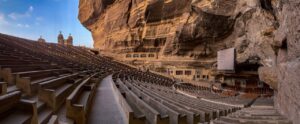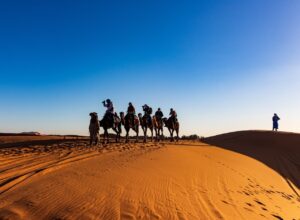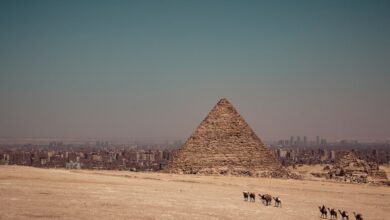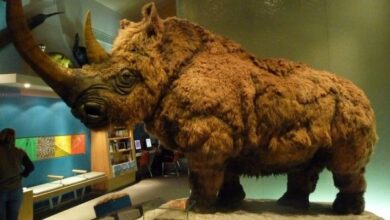Mountains of Sinai
Mountains of Sinai
Since the sacred texts include so many references to the land of Egypt, it is reasonable to assume that a great number of miraculous occurrences as well as many significant turning points in the annals of human history have taken place in that region.
To the west of the Great Pyramids of Giza, in the midst of the red desert of the Sinai Peninsula, two thousand years ago, Moses had an encounter with the Holy Spirit while climbing Mount Sinai.
Ever since that time, this region has been regarded as sacred by the Abrahamic religions, and as a result, it has drawn the attention of tourists from all over the world.
There is a mountain in the Sinai Peninsula of Egypt that is supposed to be in the same position as the historical Mount Sinai. This peak goes by the name Mount Sinai, but it is also known as Mount Moses, and its Arabic name is Jabal Mousa.
Christians, Muslims, and Jews all hold the belief that God revealed the Ten Commandments to Moses at the peak of Mount Sinai. Because of this, all three faiths consider Mount Sinai to be a holy site.
Where exactly is Mount Sinai located?
The city of Saint Catherine, which is in the administrative area of South Sinai, it can be found 451 kilometers away from the sprawling metropolis of Cairo. It is located in close proximity to Mount Catherine. 
Mount Sinai provides a view of the Saint Catherine Monastery, which was established as a Greek Orthodox monastery between the years 548 and 565 and is considered to be one of the earliest monasteries in human history.
History of Mount Sinai
A Pharaoh-serving Egyptian priest prophesied that a Hebrew kid would release the Hebrews from slavery. Pharaoh commanded that every male Hebrew kid be drawn and slain. Moses’ father left him adrift in the Nile to rescue him.
Moses was discovered and nurtured by the Pharaoh’s daughter. Moses was raised in the royal family’s traditions, including esoteric studies and Egyptian magic. Moses was angered by the Pharaohs’ treatment of his people when he was 40.
He murdered an Egyptian supervisor and escaped to Sinai Peninsula’s desert. Moses became a shepherd at Mt Horeb for 40 years. He found a shrub burnt by its own flame. Moses received a voice from the fire (Exodus 3:1-13), which told him to free his people and return to the mountain.
Moses came to Mt Horeb twice more to speak to God, according to Exodus 24:16-18. The glory of the Lord dwelt on Mount Sinai, and the cloud covered it for six days. On the seventh day, God summoned Moses out of the cloud.
In the eyes of the Israelites, the Lord’s splendor seemed like consuming fire on the mount. Moses entered the cloud and climbed Mount Sinai, where he spent 40 days and 40 nights.
During his stay on Mount Sinai, Moses received the Ten Commandments and precise instructions to construct the Ark of Covenant, a portable box made of wood and gold. Moses and his followers left Mt Sinai for the Promised Land after finishing the Ark of the Covenant.
Traveling to Sinai Mountain
Every year, thousands upon thousands of people make the journey to Mount Sinai. Tourists vacationing in Dahab, Sharm el Sheikh, or even Cairo sometimes combine a trip to Mt.
Sinai with a stop at the Monastery of St. Catherine because of the mountain’s closeness to the Red Sea and its picturesque environs. If you want to sleep as near to the base of Mount Sinai as possible, you may do so in the quaint settlement of St. Catherine.
Winter months (December to February) may see temperatures drop to as low as -1 degrees, so pack accordingly. If you’re looking for a really unique and enlightening camping experience, you should definitely try setting up your tent near the peak of Mt. Sinai.
Mount Sinai Hiking
Climbing the mountain is a pleasant experience. Enjoy a glimpse of the stunning high mountains
 in southern Sinai. Mount Sinai may be climbed by foot, or with the help of native donkeys or camels.
in southern Sinai. Mount Sinai may be climbed by foot, or with the help of native donkeys or camels.
Considering that Mt. Sinai is 2,285 meters high, the trek is beautiful but does need a reasonable degree of fitness.
The Camel Trail and the Steps of Repentance are the two most popular ways hikers travel to the peak. About 300 meters below the peak, on a plateau called Elijah’s Basin, the two paths converge.
From there, visitors must climb 750 shaky, uneven stairs to a modest church and a mosque at the peak, but alas, the doors to both are shut.
The ascent and the peak also provide breathtaking panoramas of the surrounding landscape, including the swooping valleys and rugged mountain ranges. In the distance, you can make out the peak of Mount Catherine, or Gebel Katarina in Arabic.
The Camel Path
The first and easiest way to the top of the mountain is this one. If you continue along the northern wall of St. Catherine’s Monastery beyond the end of the property, you’ll find the beginning of the camel route.
If you keep a steady pace, you should be able to reach the peak in around two hours. The camel track is well-defined and broad, and it gradually rises over a series of switchbacks.
Most hikers choose to walk up, however, those who prefer a more leisurely ascent may rent a camel at the trailhead (behind the monastery) and ride it to the top, where it terminates at Elijah’s Basin.
On the ascent, you may stop at any of the many shops selling refreshments including water, tea, coffee, and snacks.
Reconciliation Steps on Mount Sinai
From the monastery parking lot, the second way to the peak is a strenuous ascent up the 3750 Steps of Repentance. It starts just outside the monastery’s southeast wall. A monk’s penance included laying these stairs.
The 3000 stairs leading to Elijah’s Basin and the further 750 up to the peak are built of coarsely hewn rock, are quite steep in sections, and have uneven surfaces. They need sturdy knees and careful foot placement.
However, the beautiful mountain landscape along the route makes the additional work worthwhile, and the views from the trail’s lower levels of the monastery are breathtaking.
Those interested in experiencing both paths to the top of Mount Sinai should take the camel track to the peak and the stairs to return.
The Hiking Trail in Wadi Al Arbain, Mount Sinai
It is also possible to ascend the adjoining peak of Gebel Safsafa. More landmarks from the past will come into view as you go by them.
This hike begins in Wadi Al Arbain, located behind the settlement of Al Milga, and travels through the 6th-century Monastery of Forty Martyrs, the Rock of Moses (believed to be the rock from which Moses drew water by striking it with his staff), and a few hermit cells.
Near Elijah’s Basin, the Wadi Al Arbain Route meets up with the main Mount Sinai trail.
Take Away
It is possible for visitors and pilgrims to trek to the peak of the mountain Sinai, particularly during the winter months. The vast majority of visitors begin their ascent at two in the morning in order to get to the peak while it is still dark and take in the beautiful view of the sunrise from the highest point on the mountain.




